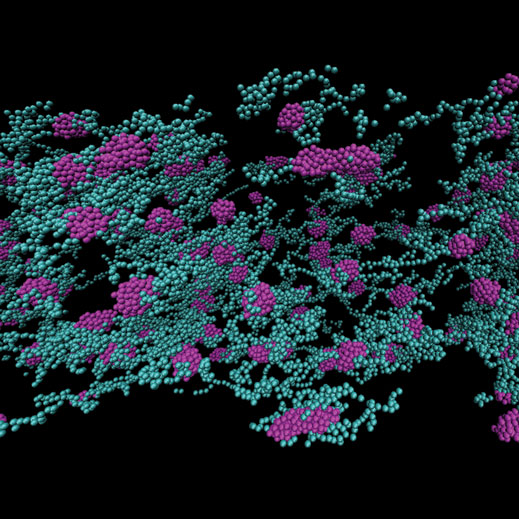Setting Silk to Music
Pound for pound, spider silk is one of the strongest and most resilient materials known. But new research by MIT’s Markus Buehler and others might point the way to even better materials for a variety of applications—and an ear for music might be a key to creating these synthetic substances.

Buehler, a professor of civil and environmental engineering, has teamed up with a biomedical engineer, a materials scientist, a mathematician, and a music professor, among others, to devise a new approach to developing biologically inspired molecules. “We’re trying to approach making materials in a different way,” Buehler explains, “starting from the building blocks”—in this case, the protein molecules that form the structure of silk.
Buehler’s previous research determined that fibers with a particular kind of hierarchical structure help to give silk its exceptional properties. Molecules form crystals or disordered aggregates, which are in turn assembled in particular sequences, and those sequences themselves are arranged in particular ways. For its initial attempt at synthesizing a new material, the team chose to look at variations on that basic structure.
This approach, which began with detailed computer modeling, led to some surprising results. Some arrangements worked much better than others that had seemed equally promising. “This taught us that it’s not sufficient to consider the properties of the protein molecules alone,” Buehler says. It’s also necessary to “think about how they can combine to form a well-connected network at a larger scale.”
The team found that one potentially useful way of thinking about these larger-scale properties is by translating them into music. The different levels of silk’s structure, Buehler says, are analogous to the hierarchical elements that make up a musical composition—individual notes assembled into measures, which in turn form a melody, and so on. The team enlisted the help of composer John McDonald, a professor of music at Tufts, and MIT postdoc David Spivak, a mathematician who specializes in category theory. Together, using analytical tools derived from category theory to describe the protein structures, the team figured out how to translate the details of the artificial silk’s structure into musical compositions.
The differences were quite distinct: strong but useless protein molecules translated into music that was aggressive and harsh, Buehler says, while molecules that formed usable fibers resulted in music that sounded much softer and more fluid.
Buehler hopes that musical compositions might also be used to predict how well new variations of the material might perform.
Keep Reading
Most Popular
Large language models can do jaw-dropping things. But nobody knows exactly why.
And that's a problem. Figuring it out is one of the biggest scientific puzzles of our time and a crucial step towards controlling more powerful future models.
The problem with plug-in hybrids? Their drivers.
Plug-in hybrids are often sold as a transition to EVs, but new data from Europe shows we’re still underestimating the emissions they produce.
Google DeepMind’s new generative model makes Super Mario–like games from scratch
Genie learns how to control games by watching hours and hours of video. It could help train next-gen robots too.
How scientists traced a mysterious covid case back to six toilets
When wastewater surveillance turns into a hunt for a single infected individual, the ethics get tricky.
Stay connected
Get the latest updates from
MIT Technology Review
Discover special offers, top stories, upcoming events, and more.